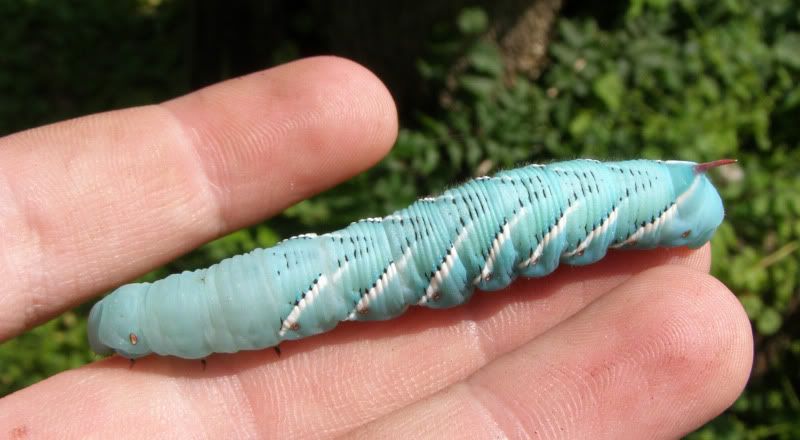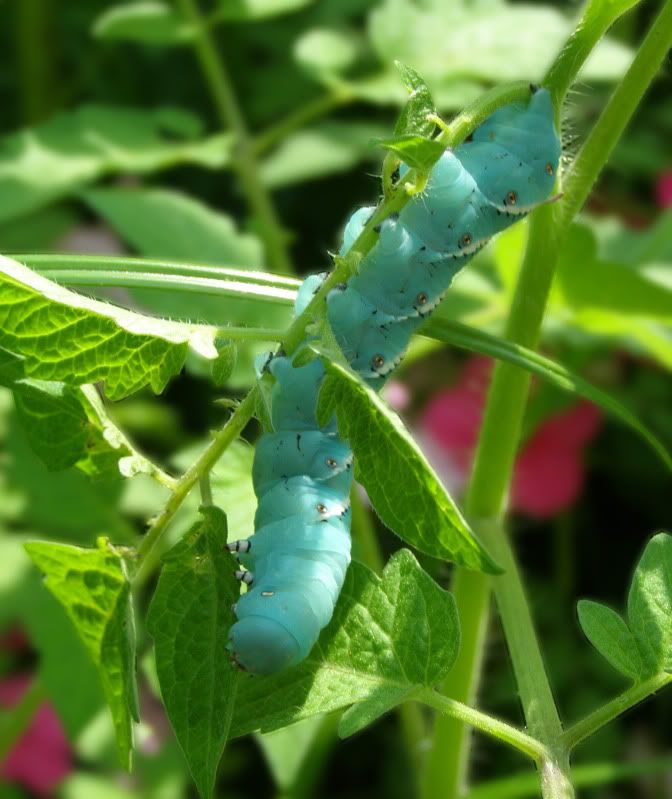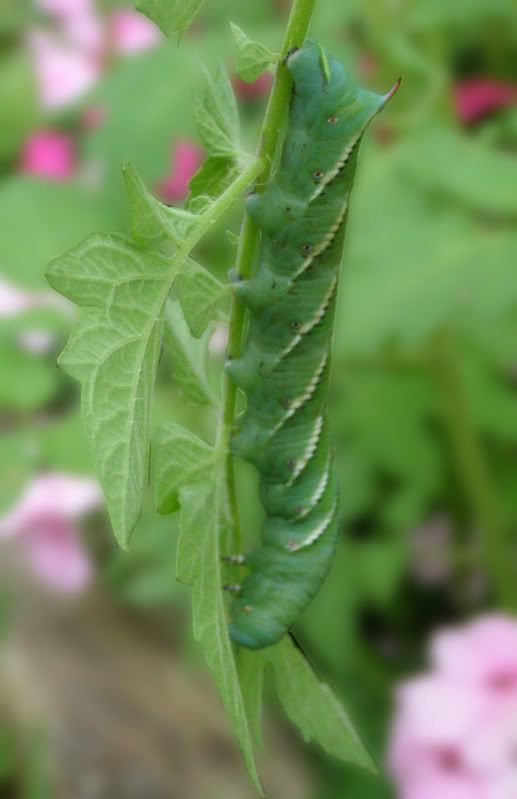
Being a beekeeper and someone who enjoys seeing gold finches every so often it was natural to include sunflowers into the normal rotation of crops. The tomatoes this year were planted in a different garden bed and the sunflowers were planted in the former tomato bed. The sunflowers are growing nicely but about a month after they'd germinated I started to notice this odd weed coming up all over the place. As it turns out one or more of the varieties of tomatoes planted are cold hardy annuals. So now I'm left with some 100+ tomato plants coming up all over the place. My dad being a firm tomato lover refuses to let me weed all of them out. I reluctantly agreed. But then earlier this week I was at the pet store, of all places, when I found the solution to my problems.

Manduca quinquemaculata, The Tomato Hornworm, a native sphinx or hawk moth very similar to the hummingbird moth in appearance, who's known host plants include tobacco, eggplant, and of course tomato, all on sale for only $1.50 a caterpillar. I bought two!

They quickly took to the plants and have already dead headed 4 of the small plants. And are ferociously clearing their way though. Obviously two caterpillars nearing the end of their development won't solve my problem, but hopefully they'll reproduce and I'll get some nice moths out of it. They're blue color comes from a lack of their natural diet. In captivity they're fed something similar to cricket feed which keeps them alive and (supposidly) not poisonous.

After two days of eating tomato leaves they quickly green up to their natural pigment. They didn't simply turn green all over in a gradual pace, instead I was able to see exactly where the green pigment was inside the caterpillar as they ate it. It was really neat. When they finally finish their development they'll likely drop to the ground and spin cocoons. I believe they should hatch fully too but I'm not certain on this.